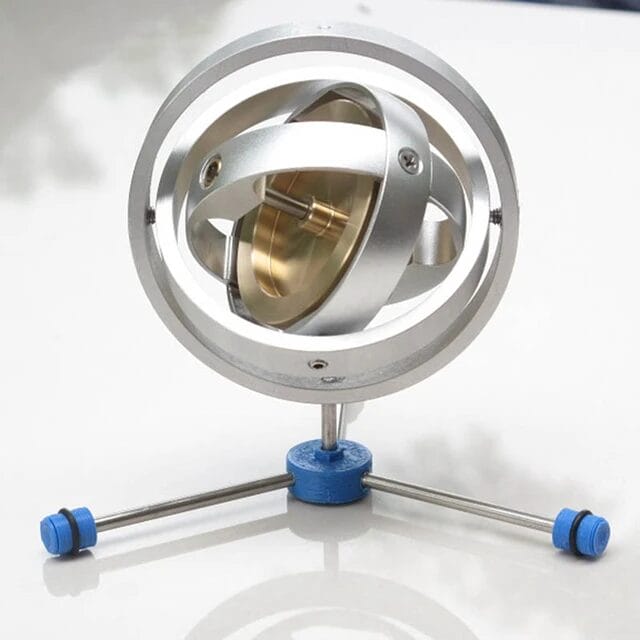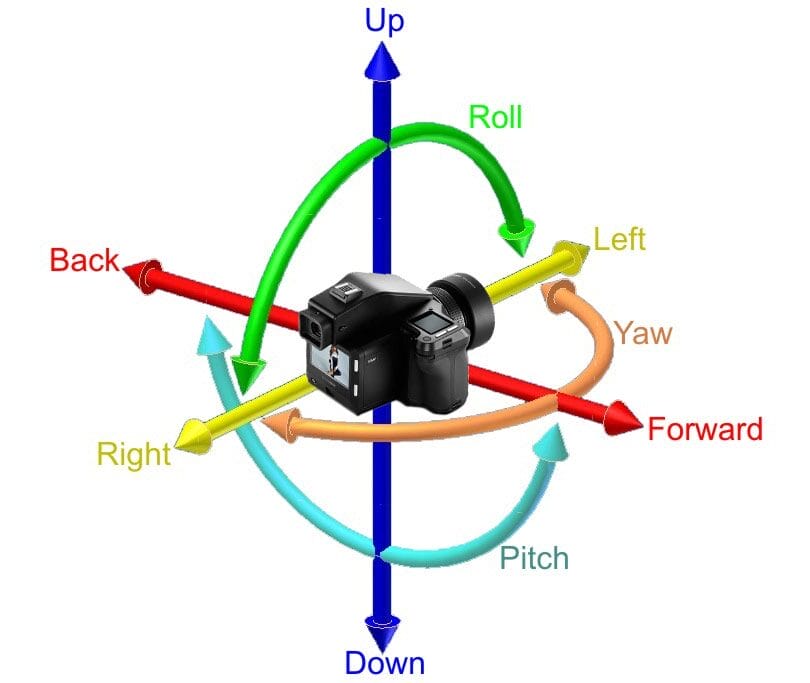Unraveling the mysteries behind drone technology involves delving into the intricate workings of a crucial component: the drone gyroscope. Understanding how this device functions is essential for mastering control and stability in drone flight operations. Stay tuned as we uncover the inner workings of this vital technology and its impact on the world of drones.

Key Takeaways
- Utilize gyroscopes for stability: Gyroscopes play a crucial role in stabilizing drones during flight, ensuring smooth and controlled movements.
- Consider MEMS for cost-effective solutions: MEMS gyroscopes offer a budget-friendly option for drone enthusiasts without compromising on performance.
- Evaluate Fiber Optic Gyros for precision: For those seeking high accuracy in navigation and positioning, fiber optic gyroscopes provide superior precision.
- Prioritize gyro selection based on needs: When choosing a gyroscope for your drone, assess your specific requirements such as cost, accuracy, and application to make an informed decision.
- Enhance drone navigation with gyroscopes: By integrating gyroscopes into drones, navigation capabilities can be significantly improved, leading to more efficient and reliable flight operations.
- Regular maintenance for optimal performance: To ensure gyroscopes function effectively, conduct routine maintenance checks and calibrations to maximize their performance and longevity.
Understanding Gyroscopes in Drones
Functionality
Gyroscopes in drones play a crucial role in maintaining stability and controlling orientation during flight. These devices detect any deviation from the desired position and provide corrective signals to the drone’s flight controller. They help drones stay level and steady, even in windy conditions or when performing complex maneuvers.

Design Elements
The gyroscopes used in drone technology are typically small, lightweight, and highly sensitive components. They consist of a spinning mass that resists changes in orientation, allowing them to accurately measure angular velocity. These gyroscopes are integrated into the drone’s flight control system to ensure precise navigation and smooth flight operations.
Significance in Measurement
Gyroscopes are essential for measuring motion and orientation in drones. They provide real-time data on the drone’s pitch, roll, and yaw rates, enabling the flight controller to make instantaneous adjustments to maintain stability. This information is crucial for autonomous drones, as it helps them navigate through various environments with precision and efficiency.
Key Roles of Gyroscopes in Unmanned Systems
Stabilizing Drones
Gyroscopes are essential components in unmanned systems, especially drones, for stabilizing the aircraft during flight. By detecting any deviations from the desired orientation, gyroscopes provide real-time data to adjust the drone’s position. This ensures that the drone remains level and steady even in turbulent conditions such as high winds.
Compensating for External Factors
One of the primary functions of gyroscopes in drones is to compensate for external factors like wind that can cause instability. When wind gusts push against a drone, the gyroscope detects these disturbances and sends signals to the flight controller to make necessary corrections. This helps in maintaining the drone’s course and stability, preventing it from veering off course or losing control.
Correcting Orientation and Balance
Gyroscopes play a crucial role in correcting the orientation and balance of drones during flight. As drones maneuver through different terrains or perform complex aerial maneuvers, gyroscopes detect any changes in orientation and help adjust the drone’s position accordingly. This ensures that the drone maintains its intended direction and balance throughout its operation.
Benefits of Gyroscopes in Unmanned Systems:
- Enhanced Stability: Gyroscopes contribute significantly to enhancing the stability of drones, allowing them to fly smoothly even in challenging conditions.
- Improved Control: By providing accurate orientation data, gyroscopes enable precise control over drone movements, enhancing overall performance.
- Increased Safety: The ability of gyroscopes to detect deviations and make quick adjustments enhances safety by preventing accidents due to loss of control.
Dive into MEMS Gyroscopes
Utilization of Coriolis Effect
MEMS gyroscopes, which stand for Micro-Electro-Mechanical System gyroscopes, are sensors that leverage the Coriolis effect for precise measurement. This effect causes a vibrating mass to move perpendicular to the direction of its oscillation when it rotates.
Compact Nature
These devices are known for their compact size, making them ideal for various applications where space is limited. MEMS gyroscopes can provide both analog and digital output signals, offering versatility in interfacing with different hardware components.
Applications in Drone Technology
MEMS gyroscopes play a critical role in drone technology by providing accurate orientation data. By measuring angular velocity and detecting any changes in orientation, these sensors help drones maintain stability and navigate effectively. The use of MEMS gyroscopes has revolutionized the drone industry, enabling precise control and maneuverability in unmanned aerial vehicles.
Exploring Fiber Optic Gyros
Working Principle
Fiber optic gyroscopes (FOGs) are sensors that utilize the electro-optical effect to measure rotational motion. They operate based on the interference of light waves traveling through optical fibers. By exploiting the 3D nature of light, FOGs can detect rotation along multiple axes simultaneously.

Interference Patterns
In FOGs, laser beams are split into two paths within a coil of optical fiber. These beams travel in opposite directions and later recombine. When the gyroscope rotates, the interference patterns between the two beams shift due to the gyros’ movement. By analyzing these shifts, FOGs can accurately determine the rate of rotation.
- Advantages of FOGs:
- Superior Precision: Fiber optic gyroscopes offer exceptional accuracy in measuring angular velocity, making them ideal for applications requiring precise navigation and stabilization.
- Enhanced Reliability: Unlike mechanical gyros, FOGs have no moving parts, reducing wear and tear while increasing longevity and reliability.
- Immunity to External Factors: FOGs are less susceptible to external factors like vibration or shock compared to traditional gyroscopes, ensuring consistent performance even in challenging environments.
Flight Modes and Data Accuracy
In aviation, top-of-the-line drones often incorporate fiber optic gyroscopes due to their ability to provide reliable data for various flight modes. Whether it’s maintaining steady hovering or executing complex maneuvers in 3D space, FOGs deliver accurate measurements crucial for safe and stable drone operations.
Stabilizing Drones with Gyroscopes
Three-Axis Gyroscopes
Gyro stabilization technology is crucial for drones to maintain stability during flight. These gyroscopes are configured along three axes – pitch, roll, and yaw. They detect any rotation or deviation from the drone’s intended orientation.
The three-axis gyroscope plays a vital role in stabilizing drones by constantly measuring and adjusting the drone’s position in real-time. This allows the drone to counteract external forces such as wind gusts or sudden movements, ensuring smooth and steady flight.

Six-Axis Gyroscopes
Six-axis gyroscopes, which include an additional three axes for linear motion, are essential for drones equipped with autonomous flight modes and advanced flight capabilities. In addition to pitch, roll, and yaw, these gyroscopes measure acceleration along the x, y, and z axes.
The six-axis gyroscope enables drones to perform complex maneuvers with precision and stability. By detecting changes in acceleration and gravity forces, these gyroscopes help drones maintain their position accurately even during challenging flight conditions.

Role of Gyroscopes in Drone Cameras
Apart from stabilizing the drone’s flight, gyroscopes also play a significant role in enhancing the performance of drone cameras. By minimizing vibrations and unwanted movements caused by the drone’s motion, gyroscopes ensure that the captured video footage is smooth and clear.
Gyro stabilization technology integrated into drone cameras compensates for any shake or jitter during filming. This results in professional-quality aerial footage that is free from distortion or blurriness, even when capturing fast-paced action scenes.
Enhancing Navigation through Gyroscopes
Role of Gyroscopes
Gyroscopes play a crucial role in enhancing navigation systems in drones. By measuring the rate of rotation and angular velocity, gyroscopes provide essential data for determining the drone’s orientation in three-dimensional space. This information is vital for stabilizing the drone during flight and ensuring accurate movement.
Integration with Accelerometers
Gyroscopes work alongside accelerometers in Inertial Measurement Units (IMUs) to calculate the drone’s orientation and velocity. While accelerometers measure linear acceleration, gyroscopes detect rotational movement. By combining these two sensors, drones can precisely determine their position, speed, and direction, enabling smooth and controlled flight operations.

Ensuring Accurate Positioning
The importance of gyroscopes in drones lies in their ability to ensure accurate positioning. By continuously monitoring changes in orientation and angular velocity, gyroscopes help drones maintain stability and navigate through various obstacles. This technology is particularly crucial for tasks requiring precise movements, such as aerial photography or search-and-rescue missions.
Benefits of Gyroscope Technology:
- Enables precise control over drone movement
- Facilitates stable hovering and maneuvering capabilities
- Enhances overall flight performance and safety
Use Cases:
- Drone delivery services rely on gyroscopes for accurate navigation to reach specific destinations.
- Search-and-rescue drones utilize gyroscopes to maneuver through challenging terrains effectively.
Comparing MEMS and Fiber Optic Gyroscopes
MEMS Gyroscopes
Micro-Electro-Mechanical Systems (MEMS) gyroscopes are tiny, low-cost sensors widely used in consumer electronics. They operate based on the principle of Coriolis force acting on vibrating masses. This force causes the masses to move perpendicular to their oscillation direction, enabling rotation detection. MEMS gyroscopes are known for their compact size, low power consumption, and affordability.

Fiber Optic Gyroscopes
Fiber Optic Gyroscopes (FOGs) are high-precision sensors commonly employed in aviation, defense systems, and other critical applications. These devices utilize the Sagnac effect, where light propagating through a coil of optical fiber experiences a phase shift due to rotation. FOGs offer exceptional accuracy and reliability but come with a higher price tag compared to MEMS gyroscopes.
Functionalities and Working Principles
MEMS gyroscopes rely on silicon-based microstructures that detect rotational motion by measuring changes in capacitance or resistance. On the other hand, FOGs exploit the interference pattern of light waves traveling in opposite directions within an optical fiber loop to determine angular velocity. While MEMS gyroscopes are suitable for applications requiring cost-effective solutions with moderate precision, FOGs excel in scenarios demanding high accuracy and stability.
Applications
- Aerospace: MEMS gyroscopes find use in drones, smartphones, and gaming controllers due to their small form factor and cost-efficiency.
- Defense: Fiber optic gyroscopes are preferred for navigation systems in missiles, aircraft, and submarines where precise orientation data is crucial.
- Industrial: In industrial settings like robotics and autonomous vehicles, MEMS gyroscopes provide adequate performance at a lower cost.
- Research: FOGs are instrumental in seismic monitoring equipment and space missions where precise positioning is essential.
Choosing the Right Gyroscope for Your Drone

Performance Considerations
When selecting a gyroscope for your drone, accuracy is crucial. Opt for a gyroscope with high accuracy to ensure precise flight control and stability. response time plays a vital role in how quickly the gyroscope can detect and respond to changes in the drone’s orientation.
Consider the weight of the gyroscope as it impacts the overall weight of the drone. A lightweight gyroscope can contribute to improved flight agility and efficiency. On the other hand, a heavier gyroscope may affect maneuverability and battery life.
Compatibility Check
Ensure that the selected gyroscope is compatible with your drone’s existing components and flight controller system. Incompatibility issues can lead to malfunctions, affecting the drone’s performance and safety. Verify compatibility with both hardware and software specifications.
Environmental Adaptability
Temperature range is a critical factor when choosing a gyroscope for your drone. Opt for a gyroscope that can function effectively within the temperature range in which you intend to operate your drone. Extreme temperatures can impact sensor performance and overall flight stability.
Consider the vibration resistance of the gyroscope, especially if your drone will be subjected to high levels of vibration during flight. A gyroscopic sensor with excellent vibration resistance ensures accurate readings even in challenging flying conditions.
Calibration Process
Prioritize a gyroscope that offers easy calibration processes to streamline setup and maintenance. Complex calibration procedures can be time-consuming and may require specialized knowledge or tools. Look for gyroscopes with user-friendly calibration interfaces for convenience.
Power Efficiency
Opt for a gyroscope that strikes a balance between performance and power consumption. A power-efficient gyroscope helps extend your drone’s flight time by minimizing energy usage while maintaining optimal performance levels. Consider the power requirements of different gyroscopes before making a selection.
Final Remarks
The comprehensive exploration of gyroscopes in drones sheds light on their pivotal role in stabilizing these unmanned systems and enhancing navigation accuracy. Understanding the distinctions between MEMS and fiber optic gyroscopes equips drone enthusiasts with the knowledge needed to make informed decisions when selecting the most suitable gyroscope for their specific needs. As drone technology continues to evolve, the significance of gyroscopes in ensuring flight stability and precise maneuvering cannot be overstated.
For those delving into the realm of drone technology, a deeper understanding of gyroscopes is essential for harnessing the full potential of these aerial devices. By staying informed about the latest advancements in gyroscope technology and their applications in drones, enthusiasts can elevate their flying experiences and unlock new possibilities in aerial photography, surveillance, and various other fields.
Frequently Asked Questions
What is the role of gyroscopes in drones?
Gyroscopes in drones help maintain stability and orientation by detecting and measuring angular velocity, assisting in flight control systems to adjust the drone’s position accurately.
How do MEMS gyroscopes differ from fiber optic gyros in drones?
MEMS gyroscopes are smaller, more affordable, but less accurate than fiber optic gyros. Fiber optic gyros offer higher precision and reliability due to their technology using light interference for measurements.
Why are gyroscopes essential for navigation in drones?
Gyroscopes provide crucial data on the drone’s movement, helping to stabilize flight, control direction changes, and compensate for external factors like wind or turbulence to enhance navigation accuracy.
Can a drone function without a gyroscope?
While some basic drones may operate without a gyroscope by relying solely on manual controls, most modern drones require gyroscopes to ensure stable flight, precise maneuvering, and automatic adjustments for smoother aerial performance.
How can one choose the right gyroscope for their drone?
Consider factors like accuracy requirements, budget constraints, size limitations, and intended use when selecting between MEMS and fiber optic gyroscopes. Evaluate technical specifications and match them with your drone’s specific needs for optimal performance.



